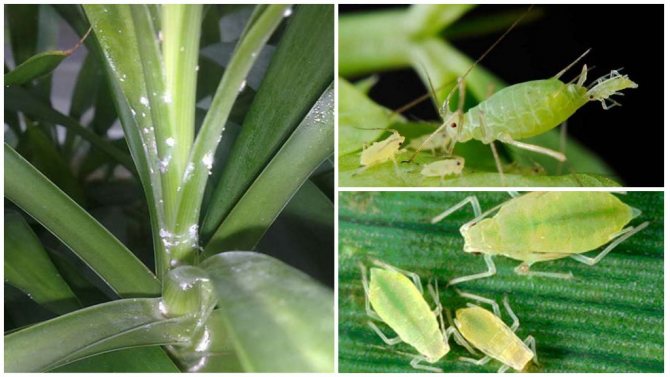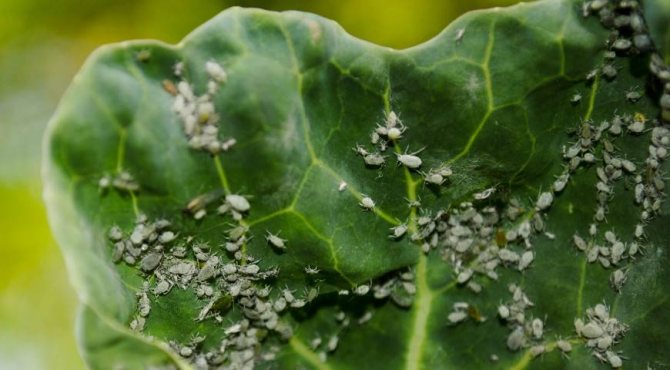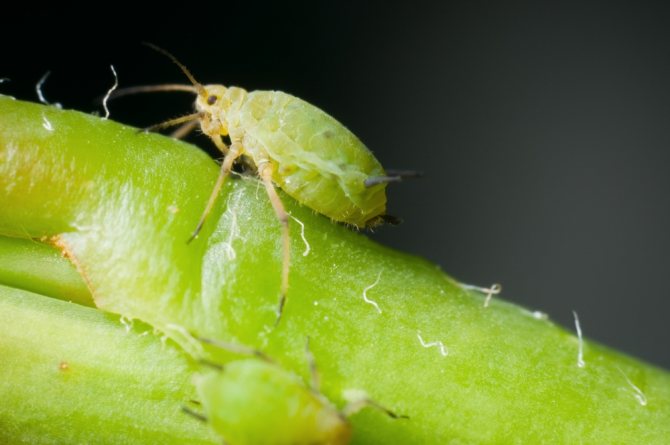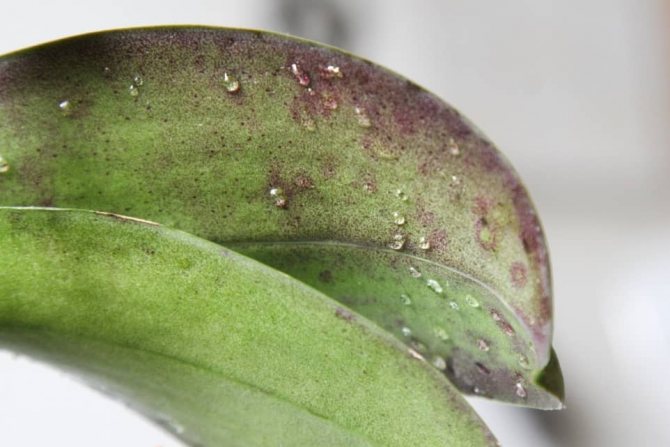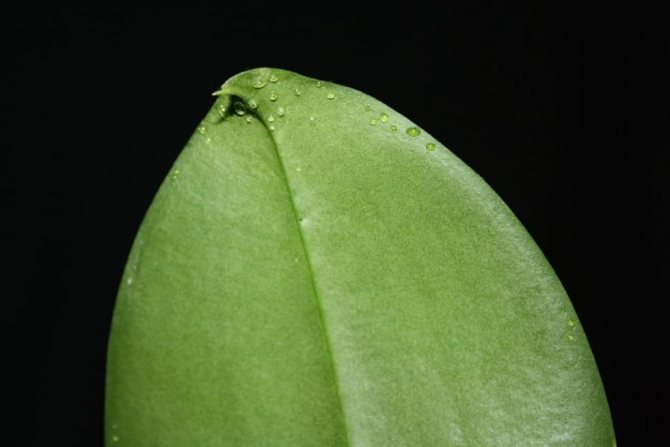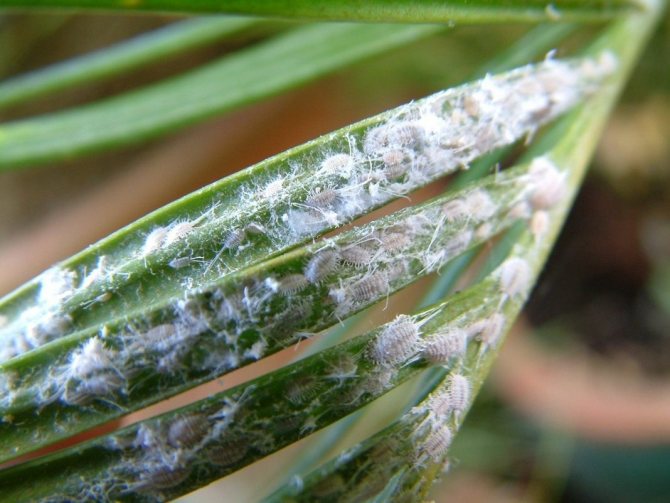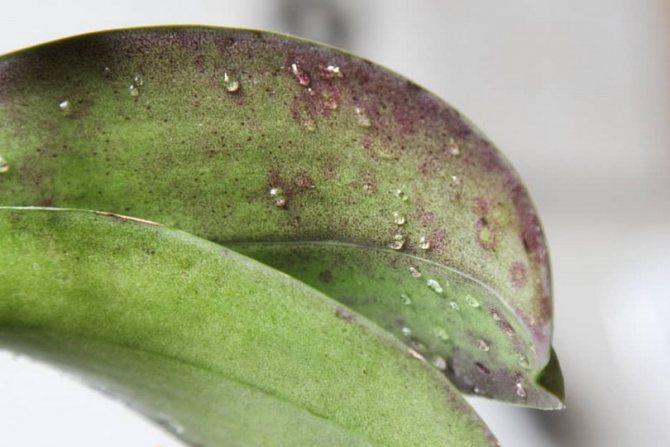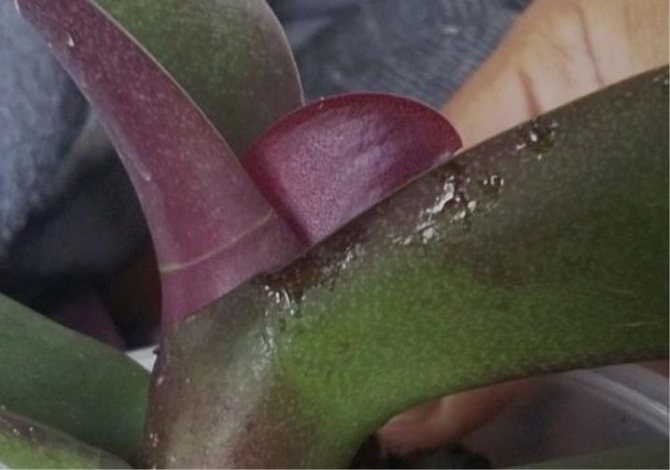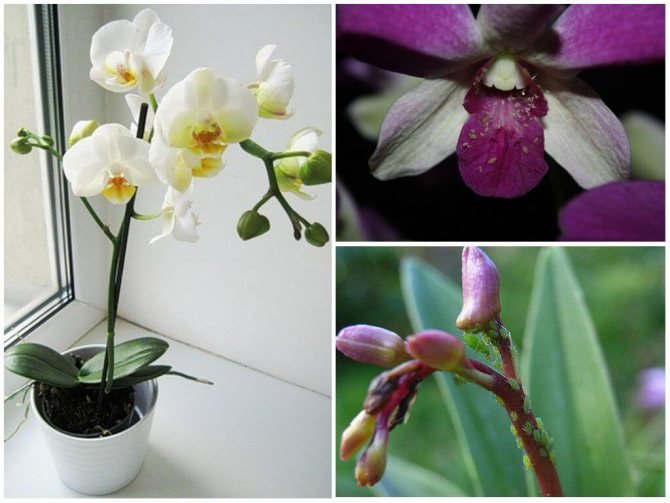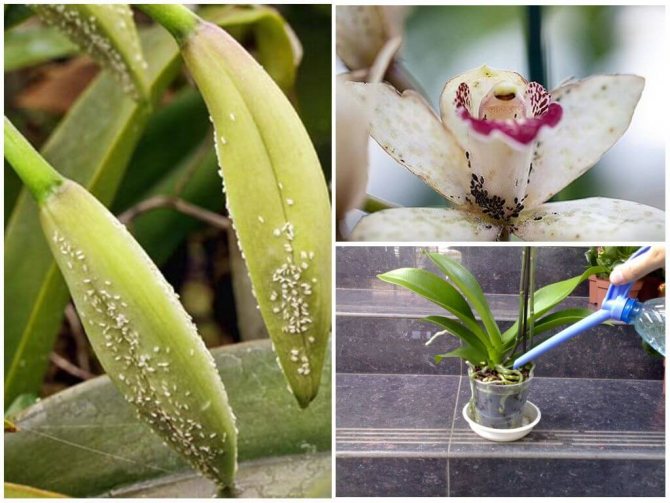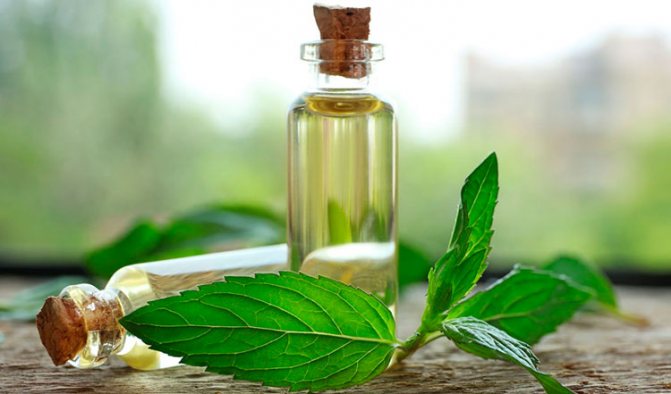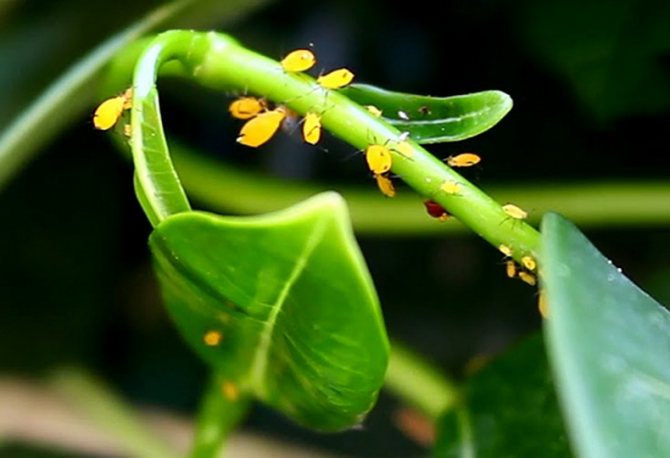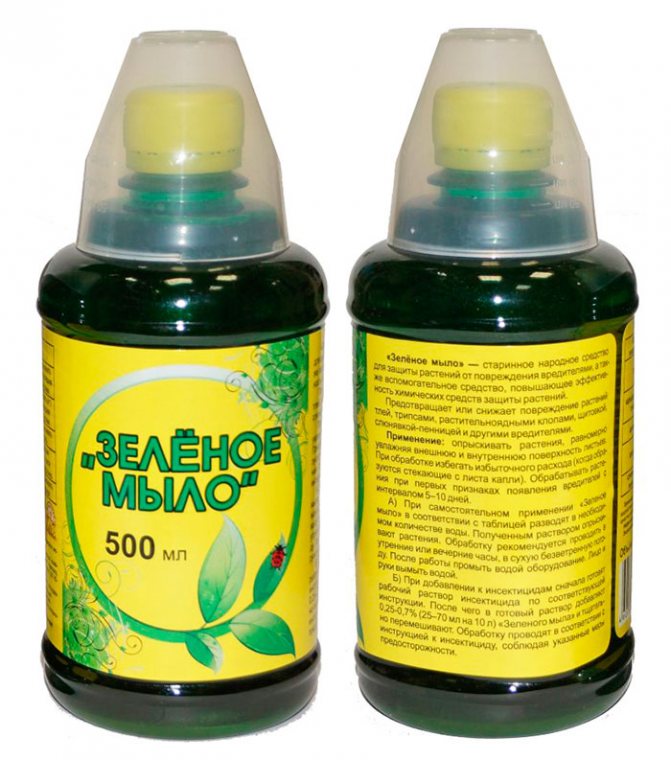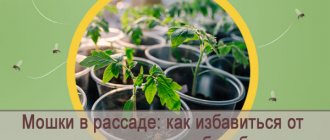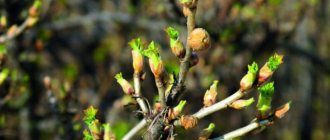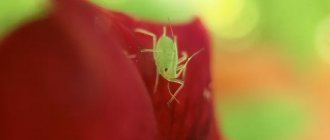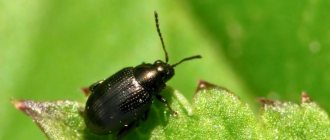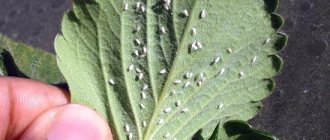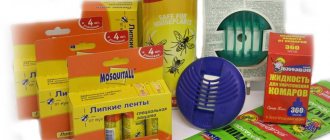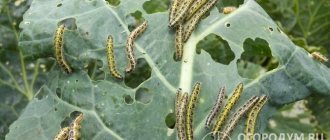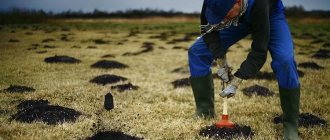»Flowers» How to get rid of aphids on orchids
0
179
Article rating
Aphids on orchids cause a lot of trouble for flower growers when grown at home. This flower culture is quite demanding to care for and any deviation from its usual microclimate becomes the cause of death. The pest multiplies rapidly. If you do not get rid of him, he will be able to destroy an indoor flower in a short time.
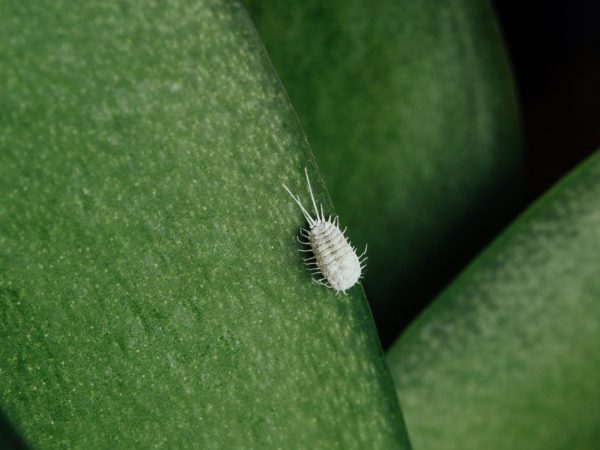
How to get rid of aphids on orchids
Why aphids are dangerous
Aphids are one of the most common and dangerous pests. Naturally, the appearance of this uninvited guest is due to improper care of the flower. The gluttonous insect selectively inflicts damage and reproduces very quickly.
The pest begins its meal from the stem and leaves until it is on the bud and flower. The insect drinks the nutritious juice, and instead injects poison into the plant, leading to disruption of photosynthesis and the outflow of nutrients. The tissues soften, as a result of which, first, individual parts of the orchid die, and then the plant itself.
In addition, the sweet secreted liquid sprayed by the aphids attracts entire ant colonies. Also, the result of the appearance of this liquid on an orchid can be damage to various bacterial and fungal diseases.
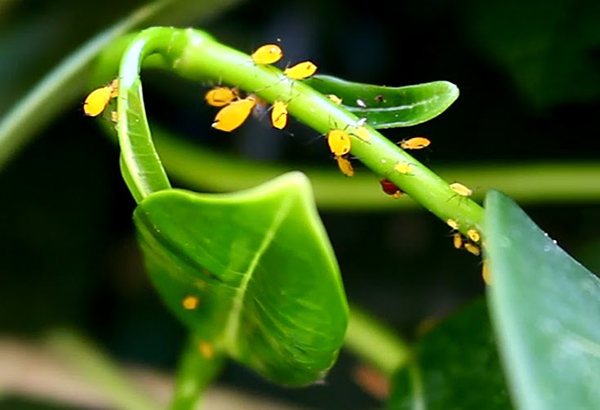

Preventive measures
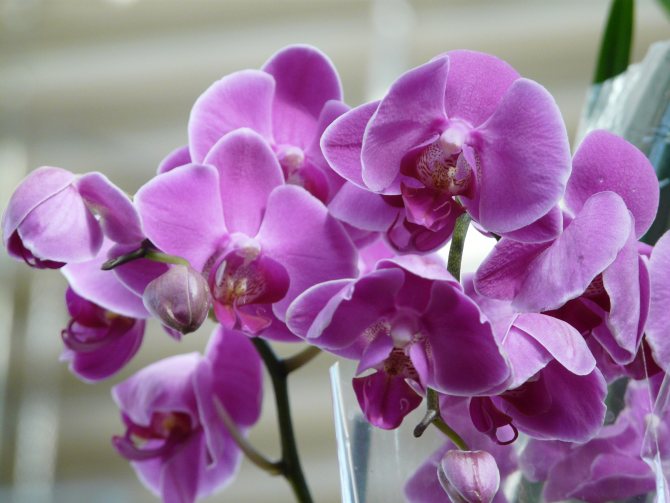

When choosing an orchid at a flower shop, you should carefully look at the stem and leaves. The soil must be disinfected before planting. The correct air humidity (about 60%) is important for the health of the flower, as well as regular watering. It is best to spray the flower with lukewarm water, root watering should be infrequent. A healthy plant needs a balanced set of micronutrients. Iron deficiency reduces the protective capacity, and excess nitrogen can lead to the appearance of aphids.
Important!
Watering an orchid, you should avoid the accumulation of moisture in its buds and the mouth of the leaves. Excess fluid is a favorable environment for the emergence of pests.
Caring for an orchid is not easy. You should regularly carefully inspect the plant from all sides, carry out preventive treatment against parasites. It is important to observe the optimal conditions for growing a flower, then the plant will have enough strength to fight diseases and pests.
Reasons for the appearance
Aphids on a plant can be seen with the naked eye. The parasite settles on the following organs of the orchid:
- the lower part of the sheet plate;
- stem;
- peduncle;
- bud;
- flower.
If a colony of this pest has occupied the area where new leaves have begun to grow, it means that aphids have already started on your orchid for a long time.
Let us note the main symptoms indicating that the plant has been affected by insects for a long time:
- aphids are located on buds and flowers;
- wilting of peduncles;
- deformation of the sheet plate;
- dark spots on the stem;
- the plant is covered with a sticky liquid.
The main reason is dry air. This insect does not survive in hot and humid climates. An excess of nutrients also favors aphids on the orchid.
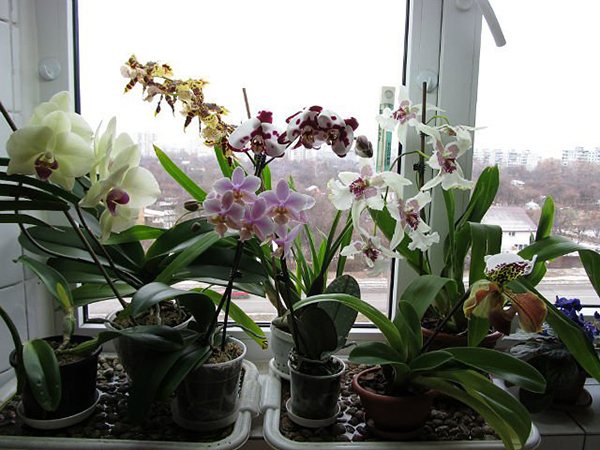

The parasite can be brought into the house with a new plant, which, immediately after its appearance in the house, was placed next to other flowers.For this reason, all newcomers must first be quarantined.
Species affecting the flower: description and photo
Small bugs that attack mainly young shoots are aphids. It can be of different colors - green, gray, yellow or black. There are over 4,000 species of these pests. On orchids, you can find 3 types.
Orchid
It is most commonly seen in greenhouses and orchid farms. Aphids mainly affect cellogynes, but can also be found on other varieties.
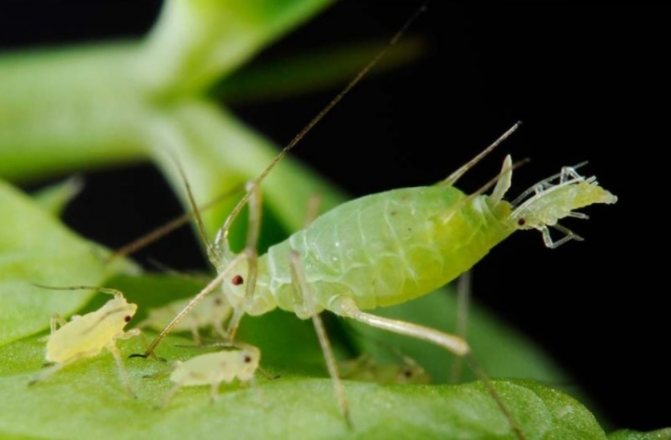

Greenhouse
It has another name - tobacco or green peach aphid. It lives in places where there are peach orchards (what are the habitats of aphids, where and why this pest appears, read here). 2-3 generations of beetles are born on trees, then females with wings look for secondary hosts. It can be orchid plants, and many others. You can mainly see them on:
- wandah;
- cattleya;
- dendrobiums.
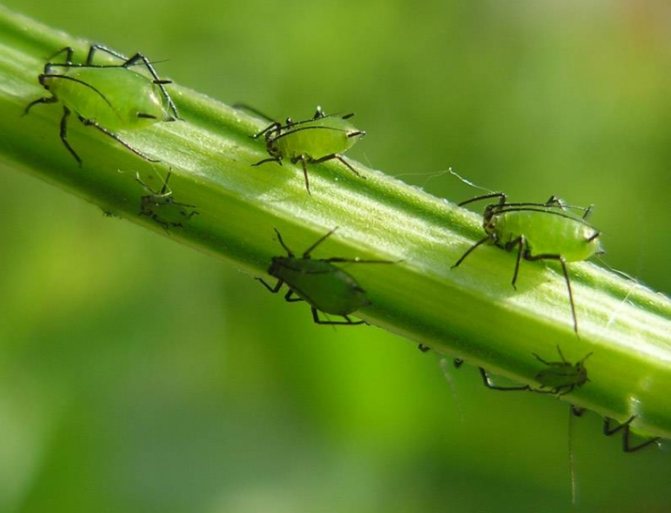

Legume or beetroot
Distributed throughout Russia. Has a dark color. It enters houses through windows, flying from viburnum, jasmine, euonymus or thistle. Can fly from a regular vegetable garden. Found on:
- dendrobiums;
- fragmapediums;
- cymbidium.
There is a danger of buying an already infected plant in the store. Ants living in apartments can be carriers of this bug. We talked about the symbiosis of aphids and ants here.
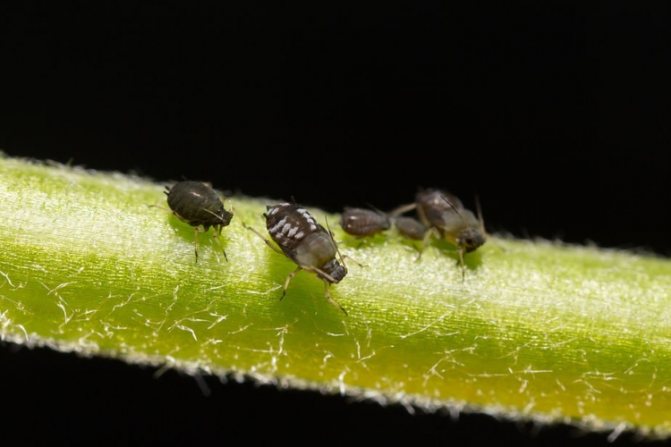

More information about the different species of aphids can be found here.
Control methods
Folk ways
Aphids are a serious opponent for a room orchid, and if appropriate measures are not taken in time, the flower can be lost.
Once the pest has been identified, immediately isolate the orchid from other indoor plants to avoid damage. Rinse the leaves immediately with warm water, and simply remove all flowers and buds.
The greatest effect will be brought by folk methods in the first stages, when the pests were discovered.
One of these methods is to treat the plant with soapy water. To prepare it, you should use dark laundry soap. Grate it and make a solution at the rate of: 1 tbsp. l. soap in 1 liter of water. After the soap is well dissolved in water, the resulting product can be applied to the leaves with a sponge. Dishwashing detergent will work instead of soap.
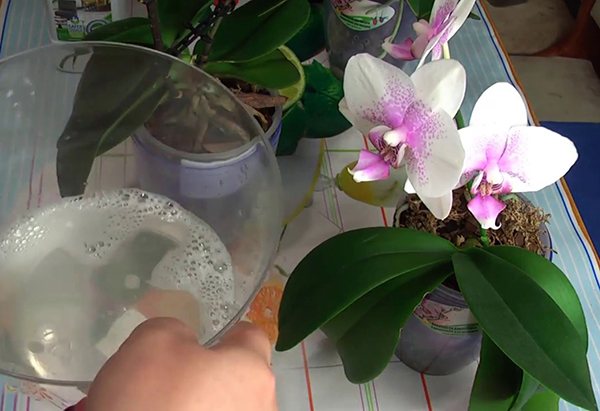

The leaves are also wiped with citrus infusion, which is insisted for three days. To prepare it, take 100 g of lemon, tangerine or orange peels and add 1 liter of water.
Onion infusion is prepared simply: the chopped onion is poured with water.
A good effect is given by rubbing with solutions with mint and tea tree essential oils. However, there are limitations in this case. This product must not be used at temperatures above +25 ° C, as well as if there is high humidity in the room.
You can also wipe the leaves with rosehip infusion.
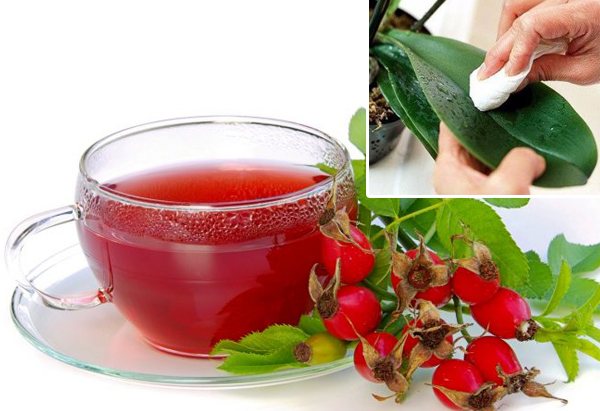

When using folk methods, you first need to remove all affected areas, and treat the leaves with prepared solutions.
Biologicals and insecticides
If you have used folk remedies and did not get the desired result, then you should switch to "chemistry". Such preparations are widely available in specialized flower shops. When using, you should strictly follow the instructions.
There are different groups of drugs. There are those that penetrate the skin or into the mouth of an insect. Some penetrate the sap of the plant, making it poisonous.
During the use of such products, precautions should be taken, since toxic substances can cause significant harm to both your health and the health of your pet.
Chemistry assistant
The maximum number of treatments with one agent is 3 times. Further use will not give a result, since an addictive effect is developed and the aphid stops responding.Reuse is appropriate no earlier than after 2 weeks. According to the mode of action, drugs are of several types: contact, intestinal and systemic. The first group is aimed at the skin of insects. After processing, the orchid is protected from direct sunlight. They cause discoloration of the leaves. The second type begins to fight aphids after getting inside. The latter species enters the juice through the roots and makes it poisonous to parasites.
In order for the plant to please with its impeccable appearance for a long time, regularly inspect it for aphid infestation. Keep the newly acquired flower separate from the rest for three weeks.
During this time, the aphid can appear. Then you immediately need to fight it in all ways, starting with sparing means.
A source
Prevention measures
Everyone knows that it is easier to prevent the invasion of a harmful insect than to fight it later. Therefore, let's talk about prevention.
Most often, aphids appear in rooms with dry air, so that the plant does not become a victim of the pest, the humidity in the room should be maintained at 60%. It is known that such an indicator of moisture is favorable for both plants and humans.
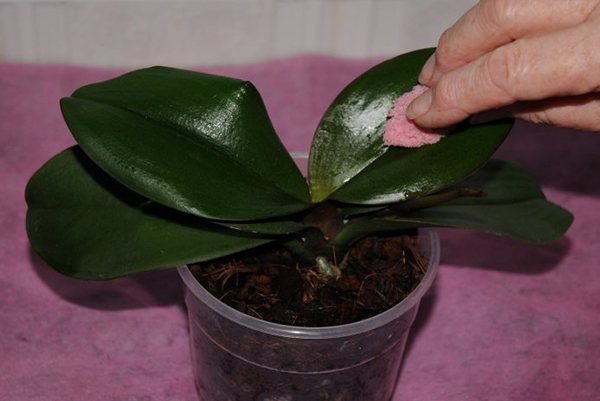

The next equally important preventive measure will be proper watering. In order not to provoke the appearance of harmful insects, you should avoid the accumulation of water between the leaves and in the buds. But here it is important that there is not enough liquid. The best option is to regularly sprinkle the leaf plates with cool water. In this case, root watering should be reduced.
In order for the orchid to have strong immunity, and to be able to "fight back" the pests, regularly feed the house plant in accordance with the recommendations of experts.


Another important preventive measure is regular observation and inspection of the flower. If you notice the appearance of an enemy, immediately proceed to actions to destroy it. Success lies in immediate action, since the smaller the aphid colony, the more likely it is to cope with the pest.
When buying a room orchid, it should be quarantined for about 15 days to make sure there are no lesions. During transplantation, be sure to treat the instruments with disinfectants.
Chemical preparations for the worm
Chemical preparations for the worm, such as "Fitoverm", "Aktara" or "Calypso" are more effective, since folk remedies usually help only in the early stages and generally do not completely solve the problem, but only stop. However, a clear disadvantage of chemicals is their impact on the environment, so you need to be careful when working with these drugs. It is recommended to adhere to these rules:
- Chemicals are toxic, so to work with them, you need to take the flower out to the veranda or balcony.
- It is advisable to dilute the solution with a respirator or mask on the face, in rubber gloves and special goggles.
- After carrying out the procedure to combat the worm, the flower must be covered with a dense plastic wrap in the form of a cap. It is necessary to keep the plant in a cap for about two days.
- You can not engage in the dilution of a chemical solution near food.
- Do not let children play near the chemical solution or be in the same room with you while processing the flower.
- Upon completion of spraying the orchid, you must carefully remove the protective equipment, rinse them and leave to dry in a ventilated area. Then take a shower and rinse your mouth well.
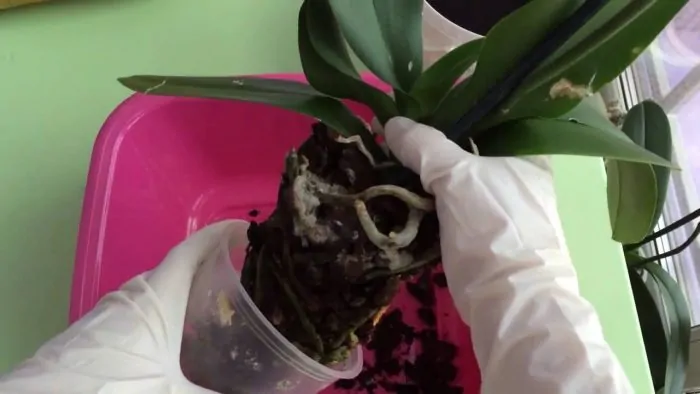

The dilution proportions of the chemical are indicated on the packaging and vary depending on the product selected.For example, if you have purchased "Calypso", then you need to dilute 0.5 ml of the drug in 1 liter of water.
Fungal diseases
Fungal diseases are the most common. Regardless of the type of pathogen, the symptoms of the disease appear on the lower and upper surfaces of the leaves in the form of a gray powdery coating, later - brown spots. The damaged spots darken more and more, the spots spread throughout the entire leaf. The entire infected leaf dies. As long as fungal spores do not nest on shoots, tubers and roots, there is a chance of effective treatment.
- Diseased orchids are isolated from other plants to prevent the spread of the disease.
- Infected leaves are cut off and destroyed.
- In the early stages of the disease, a decoction of garlic can be effective. Before purchasing a fungicide, you can try spraying with a purely biological agent.
Black rot, late blight
Black rot can be identified by spots on orchid leaves that are black or dark brown or reddish brown. The disease affects the flower at low temperatures and in an excessively wet substrate.
It starts from rotting of the roots, ends with the death of the plant.
For treatment, you need to change the conditions and spray with a fungicide.
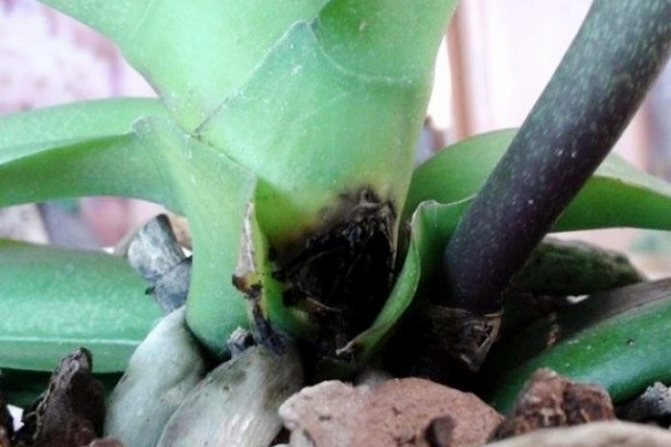

Gray mold
Low temperatures combined with high humidity contribute to the development of gray mold. It appears as brown spots with a gray bloom on the leaves. The infected parts are removed. Sprayed with fungicide.
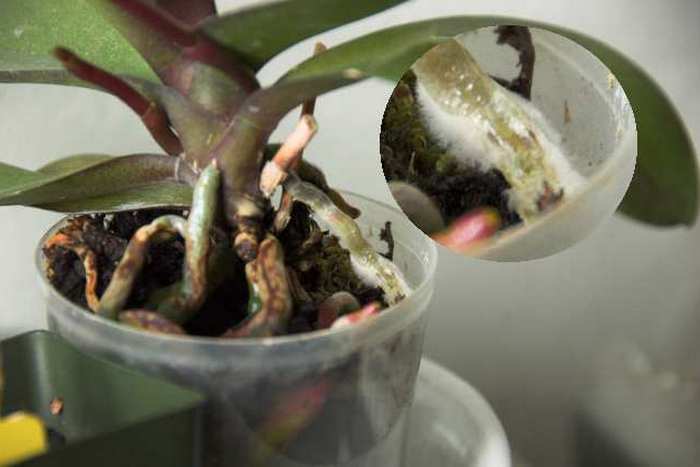

Brown rot
In the case of brown rot, treat similarly to black rot.
We recognize brown rot by means of dark brown or red-brown spots. The disease affects the plant at low temperatures and wet substrate. It starts from rotting of the roots, ends with the death of the plant.
Anthracnose
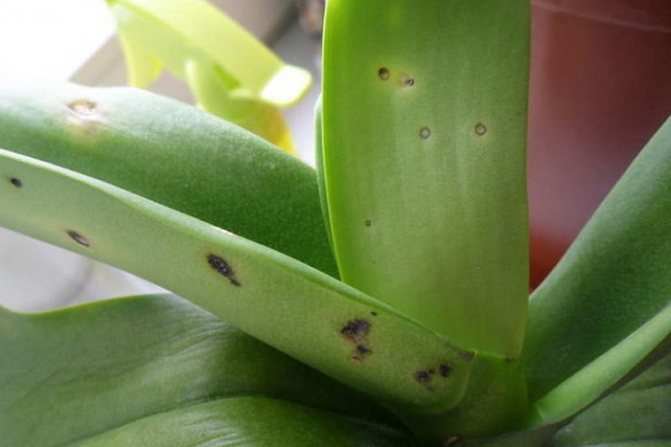

The cause of the disease is damage to the leaf blade, which occurs mechanically. Orchid leaves cover brownish-black spots that have a clear border between healthy and diseased tissue. Diseased leaves should be removed. Plants are treated by spraying with a special preparation.
How to deal - an overview of ways
After detecting the first signs of infection, a number of general actions need to be taken.
Insulation. Move the orchid with obvious symptoms of infection to a separate place.
Quarantine. Quarantine the standing specimens. Every 2-3 days, carefully inspect all bushes.
Trimming severely affected parts. Places of cuts should be treated with crushed wood or ordinary activated carbon, diluted brilliant green or manganese.
Water procedures. Soak a sponge in soapy water and wipe the orchid. An alternative to soap is alcohol
Carry out processing carefully so as not to burn the greens.
Replacing the pot, top soil layer or all soil.
After determining the type of pest, you can start treatment.
Consequences of infection
The danger of the appearance of a parasite is the absorption of nutrients and contamination with toxic elements. The vital activity of aphids on an orchid leads to the death of tissues, and then to the complete death of the flower. The secreted secretion fluid is an excellent breeding ground for spores of the soot fungus, and it can also attract other unwanted guests - ants.
Among the main consequences are:
- flower tissues die off;
- bulging red-purple areas appear on the leaves;
- a healthy orchid turns into lifeless and dried out garbage.
Reference! Aphids are carried by humans or pets. There is also a risk of buying an already infected plant in the store.
The pest also appears when the orchid is transplanted into another soil where the larvae live. Poor-quality care and inattention provoke active reproduction of individuals.


